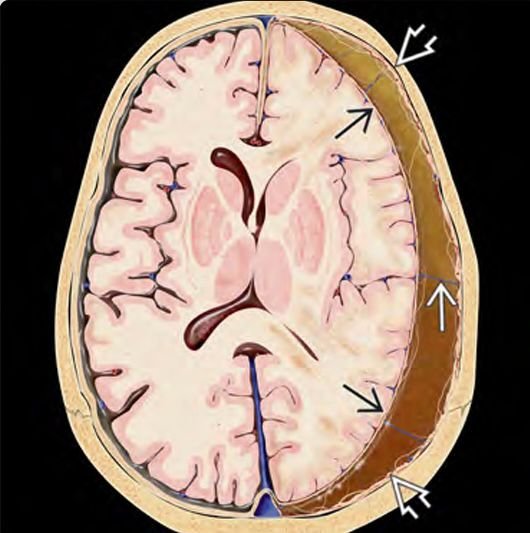Cerebral Edema
Cerebral Edema
Pediatric cerebral edema is a life-threatening condition that involves the accumulation of excess fluid in the brain tissue, causing increased intracranial pressure (ICP), brain herniation, and potentially death. In children, cerebral edema can occur due to traumatic brain injury, infections, metabolic disturbances, vascular events, or tumors. It is a medical and surgical emergency that requires prompt diagnosis and intensive neurocritical management. In Bangladesh, where pediatric neurocritical care is still evolving, early recognition and expert intervention are crucial. Dr. Md. Nafaur Rahman, a pioneer in pediatric neurosurgery and neurotrauma in the country, leads specialized care pathways for cerebral edema in infants and children, combining advanced imaging, surgical expertise, and ICU-level monitoring. Causes of Pediatric Cerebral Edema Cerebral edema in children may be caused by a wide range of neurological and systemic conditions, including: Traumatic Brain Injury (TBI) – blunt force, road traffic accidents, falls Infections – meningitis, encephalitis, cerebral abscess, TB meningitis Hypoxic-Ischemic Injury – after near-drowning, cardiac arrest, birth asphyxia Brain Tumors – both benign and malignant, causing localized swelling Metabolic Disorders – diabetic ketoacidosis (DKA), hyponatremia, hepatic encephalopathy Stroke or Intracranial Hemorrhage – SAH, SDH, intracerebral bleed Reye’s Syndrome and certain viral infections Toxic Ingestion or Poisoning (pesticides, snake venom, etc.) Types of Cerebral Edema Vasogenic Edema – caused by disruption of the blood-brain barrier, common in tumors or abscesses Cytotoxic Edema – due to cellular injury, often from hypoxia or metabolic insult Interstitial Edema – seen in obstructive hydrocephalus Osmotic Edema – from electrolyte imbalance or rapid correction of hyponatremia Understanding the type helps guide the appropriate treatment. Symptoms and Clinical Features Children with cerebral edema may present with: Severe headache (in older children) Nausea, vomiting Altered consciousness or coma Seizures Bulging fontanelle in infants Sunsetting eyes or fixed pupils Abnormal posturing (decorticate or decerebrate) Bradycardia, hypertension, and irregular respiration – Cushing’s Triad (late sign) Cranial nerve palsies in posterior fossa edema Any of these signs in a child warrants emergency neurosurgical referral. Diagnosis in Bangladesh: Imaging and Lab Support Early diagnosis is crucial for managing cerebral edema effectively. Dr. Nafaur Rahman employs: Imaging CT Scan of the Brain – first-line for trauma and rapid assessment MRI Brain – for detailed structural imaging, especially in infection or metabolic causes MR Venography – to rule out cerebral venous thrombosis Ophthalmological exam – for papilledema ICP Monitoring – in ICU for critical cases Lab Investigations Serum electrolytes, glucose, ABG CSF analysis if infection suspected Toxicology screening in unclear coma Sepsis workup Management by Dr. Md. Nafaur Rahman The primary goal is to reduce intracranial pressure, preserve brain perfusion, and treat the underlying cause. Medical Management Head elevation at 30°, strict fluid regulation Osmotherapy using Mannitol or Hypertonic Saline Sedation and ventilation to maintain normocapnia Anticonvulsants to control seizures Steroids (e.g., dexamethasone) in tumors or abscesses Antibiotics or antivirals for infectious causes Correction of metabolic derangements Neurosurgical Interventions Emergency decompressive craniectomy in refractory raised ICP External Ventricular Drain (EVD) to relieve pressure and drain CSF VP Shunt placement in obstructive hydrocephalus Abscess drainage or tumor resection if underlying pathology present Dr. Nafaur Rahman operates at NINS and the Bangladesh Paediatric Neurocare Centre, ensuring both emergency and elective care for cerebral edema. Post-Acute Care & Rehabilitation ICU care with ICP monitoring Physiotherapy and neuro-rehabilitation for motor or cognitive deficits Speech and occupational therapy Neuropsychological support for school re-entry Regular imaging follow-up for resolution of edema and related conditions Prognosis and Long-Term Outcomes Outcome depends on: Underlying cause and speed of intervention Availability of ICU and neurosurgical support Age and nutritional status of the child Early treatment leads to full recovery in many children. Delayed care, however, can result in permanent neurological deficits, seizure disorders, or death. Challenges in Bangladesh Limited ICU beds with pediatric neuromonitoring Late referrals from rural or non-specialist centers Lack of awareness among primary care providers Inadequate neuroimaging access outside Dhaka Dr. Nafaur Rahman is working to bridge the treatment gap by offering fast-track referrals and specialist care even for children from remote regions. Why Consult Dr. Md. Nafaur Rahman? Nationally recognized expert in pediatric neurocritical care Performs emergency surgery for brain swelling and coma in children Integrated care from diagnosis to rehab Operates at state-of-the-art facilities (NINS) Compassionate, family-focused care Book an Appointment or Emergency Help Dr. Md. Nafaur Rahman Assistant Professor, Department of Pediatric Neurosurgery, NINS Chief Consultant, Bangladesh Paediatric Neurocare Centre 📞 For Serial / Emergency Call: 📱 +8801912988182 | +8801607033535 🌐 www.neurosurgeonnafaur.com
YouTube Videos and Patient Reviews on Cerebral Edema










